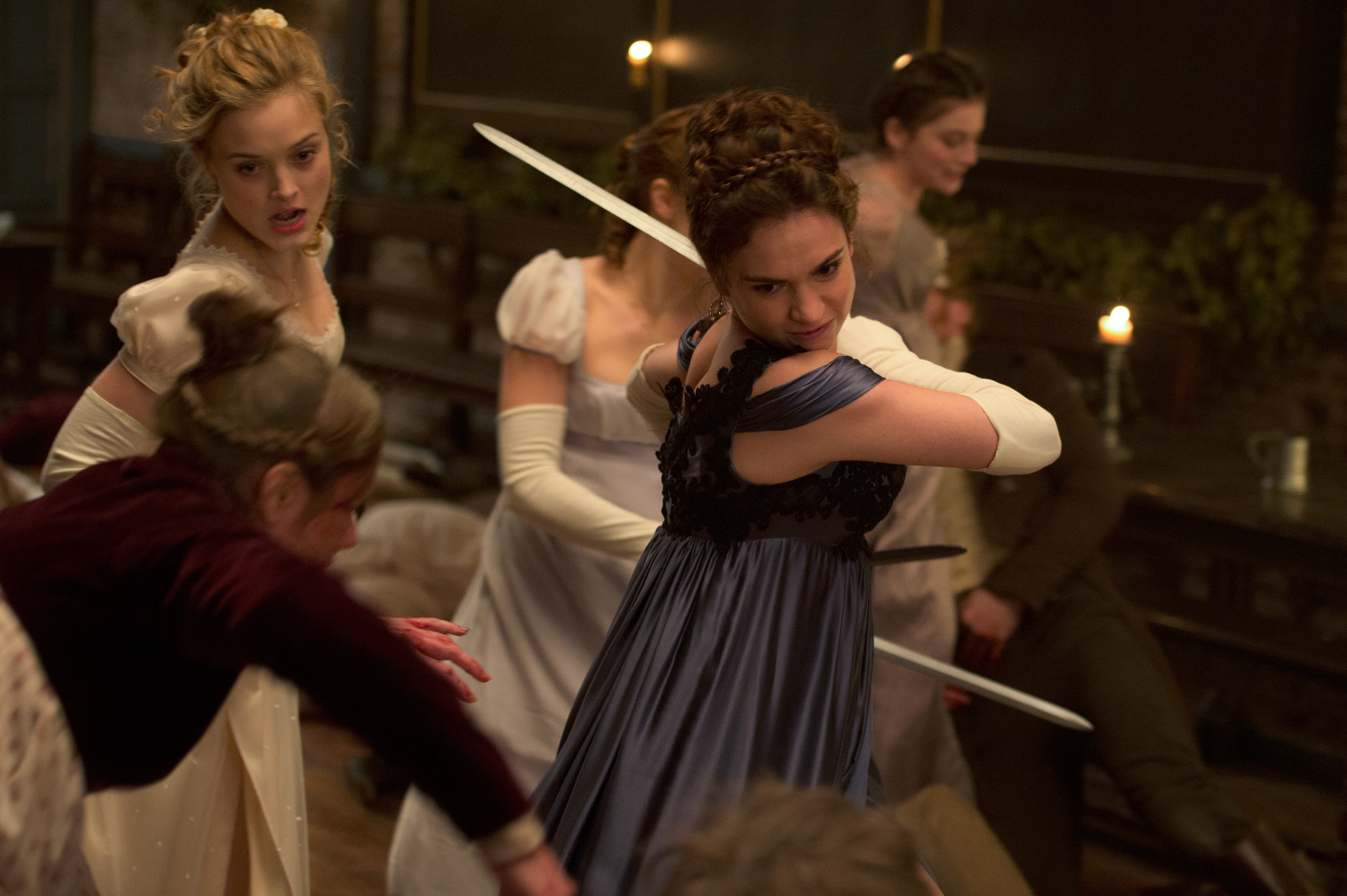
February 17, 2016, by Guest Blogger
The walking dead of Pride and Prejudice and Zombies
Last week I watched Pride and Prejudice and Zombies and came away with a rather warm feeling in my offal.
Released in time for Valentine’s day, this movie has a great deal of cerebral appeal, a lot of heart, and some period ladies venting spleen to serious (tongue through cheek) comedic effect.
The film is based on the 2009 Quirk novel co-authored from Austen’s 1813 original by Seth Grahame-Smith. Jane’s acerbic, biting wit and lashings of social bile largely remain and are augmented by martial arts, much (s)wordplay and quite a bit of flesh. This mark two version of the Bennet/Darcy off-on-off-on relationship might actually appeal more to Austen fans than hardcore zombie geeks, but IMHO should entertain both.
As another famous ‘mark two’ once put it:
“Every time I read ‘Pride and Prejudice‘ I want to dig her up and beat her over the skull with her own shin-bone.” – Mark Twain (1898)
This film does exactly that, metaphorically and perhaps litera[ri]ly digging up most of the bare bones of the English Novel and slathering them with gore – right down to the classic ending.
The biology of Austen’s zombies
I’ve been asked to comment on the biology in the film and I’ll attempt to do this without plot spoilers – but I do warn you that some guts may be spilled. It is a truth universally acknowledged that a zombie film in possession of a good plot device, must be in want of a biological explanation. This film is no exception to that rule, but the main bio-intrigue and mechanism of metamorphosis is probably off-limits here. Although I have to say I’m not entirely satisfied – or should that be sated – which might be food for thought after you have seen it yourself.
First off, these zombies are not standard canon. They are fast, they can talk, they can walk amongst us mostly without moaning and groaning (although playing spot-the-zombie leads to at least one smelly, decaying red herring in the second half). These are crypto-zombies and Darcy is there as zombie-finder General (or rather: Colonel). The way he detects zombies is innovative, plausible and biologically satisfying, although the manner in which he dispatches them does stretch credulity a little.
The internet is full of debate on the biomechanics of skull crushing (!) but in general the consensus seems to be that a normal human skull is a little harder to break than a coconut. More than 520 pounds (2,300 Newtons) of force is required – so the Darcy single-stomp despatch might be a deal-breaker for some sticklers.
The use of Japanese katanas (a two-handed slicing weapon) in 19th Century Britain rather than period small-swords or sabres is nicely covered through a MacGuffin based on wealth and status. To hack through a skull into the brain, these would certainly be the aristo-weapon of choice (axes are shown to be the best budget alternative). When the sisters were ‘doing it for themselves’, we mostly saw thigh-sheathed Chinese butterfly swords (I think) and a blur of décolletage. Would these smaller blades really penetrate a zombie skull? Call me/them soft in the head but I can happily suspend my disbelief (perhaps from a weaponised lace garter).
The mechanism of infection and conversion is not particularly detailed in the film – although bites are clearly significant. The epidemiology is instead roughly covered by ‘zombification as something a bit like rabies – but with advancing putrefaction’. We may just have to read the prequel to find out for sure (Dawn of the Dreadfuls, Quirk). In the meantime, for a ‘real’ scientific investigation of zombie modelling you could do worse than look at this pdf.
The film was great fun and made me laugh in several places, mainly the combat scenes. On reflection, it seemed to stick closer to Austen’s intentions than Romero’s and the zombies probably owed more to Richard Matheson (I am Legend) and Dan O’Bannon (Return of the Living Dead) than George – but I may need to go and re-visit all of the original(s).
Blog post by Professor Sean May from our School of Biosciences.
Image credit: Sony Pictures Publicity
No comments yet, fill out a comment to be the first

Leave a Reply